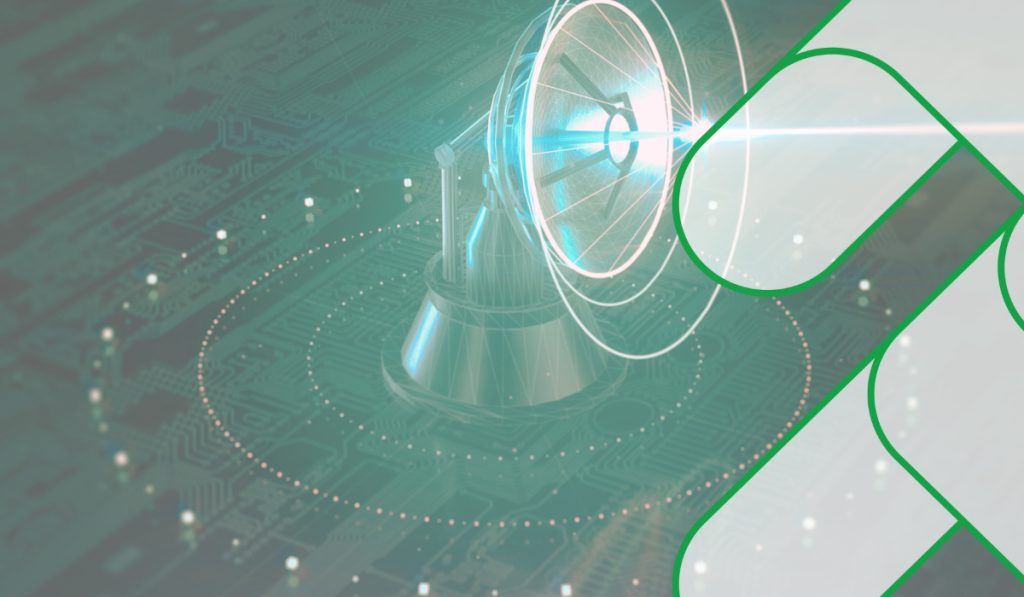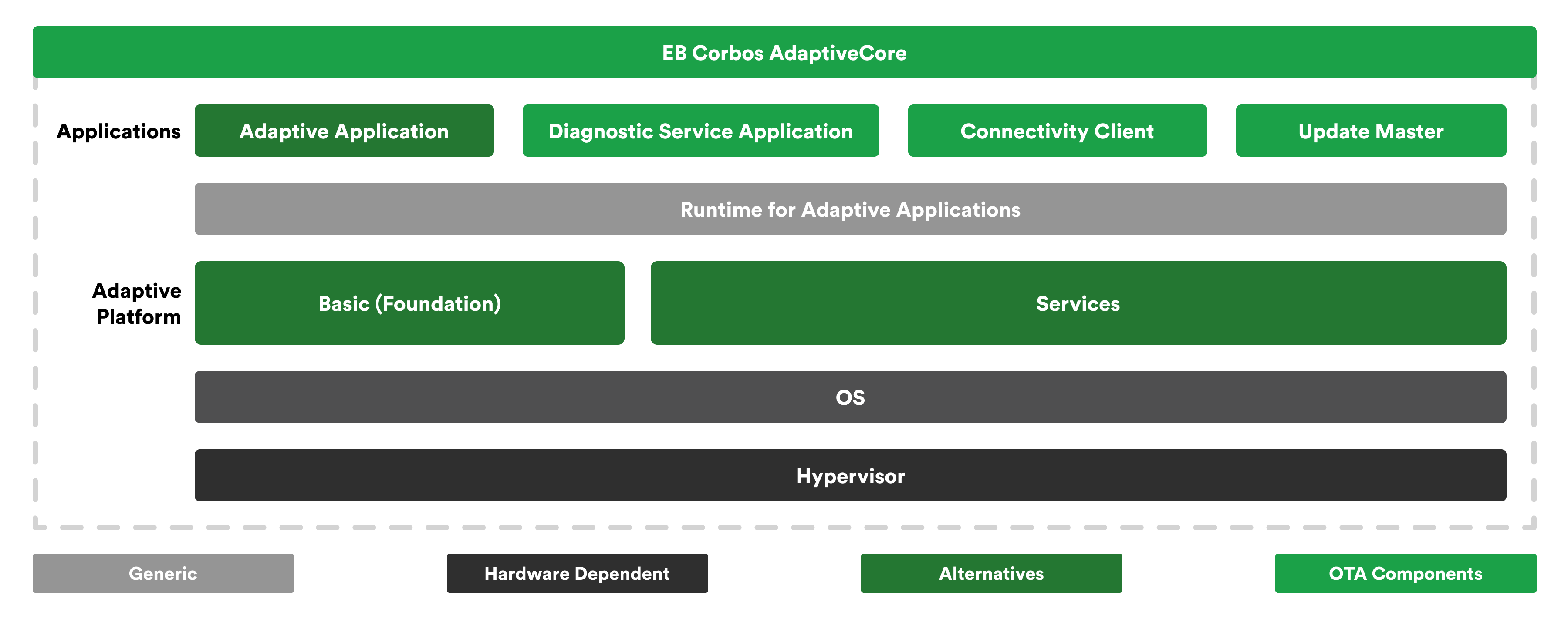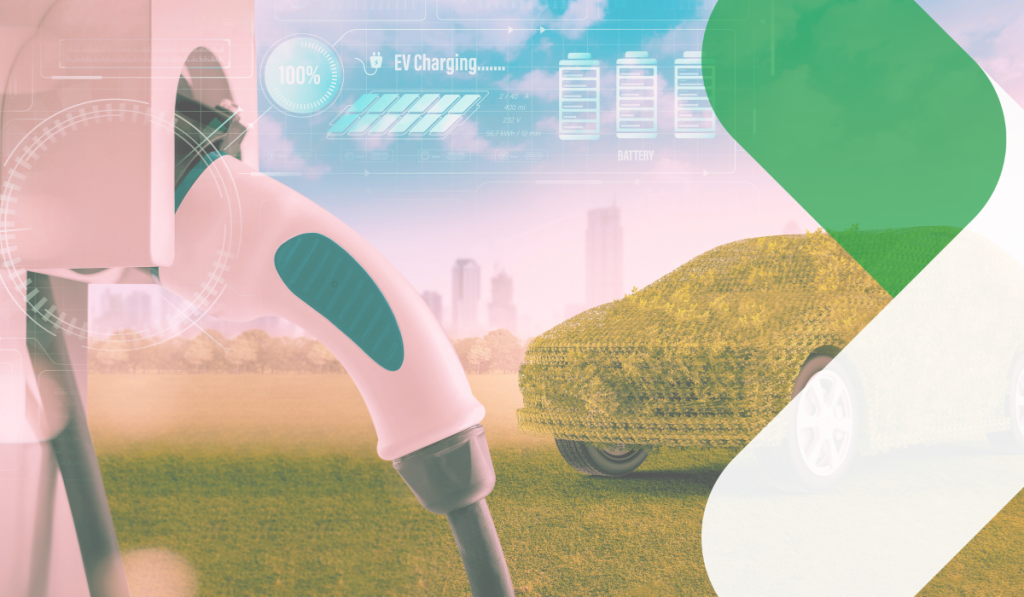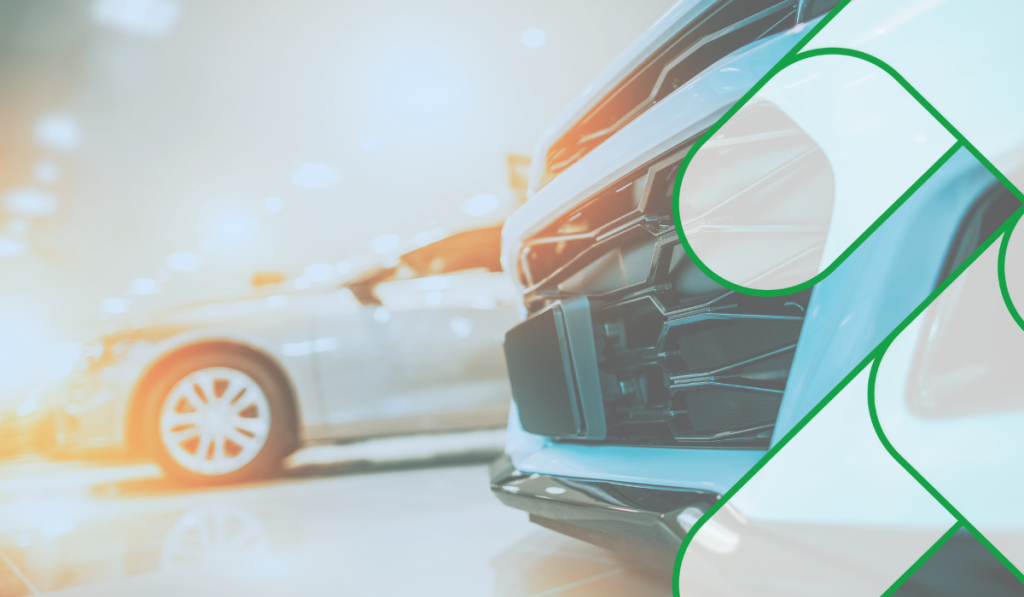
AI-Powered LiDAR: A New Era of Perception
How AI and ML enhance LiDAR technology by overcoming data processing challenges, enabling advanced applications in autonomous systems, robotics, and 3D mapping, and more.
According to recent statistics, the global AUTOSAR middleware market is estimated to reach $3.4 billion by 2030. This widespread adoption highlights AUTOSAR’s role in ensuring compatibility and interoperability across various automotive components and manufacturers, paving the way for a cohesive and efficient automotive ecosystem.
As vehicles become more software-driven, Software Over-the-Air (SOTA) updates have become increasingly vital in the automotive sector. SOTA allows manufacturers to remotely update a vehicle’s software, enhancing performance, adding new features, and addressing security vulnerabilities without the need for physical intervention. The impact of SOTA updates is reflected in their ability to continuously improve vehicle functionalities and user experiences while mitigating potential software issues swiftly. This technology not only ensures that vehicles remain up to date with the latest advancements but also significantly reduces the operational and logistical costs associated with traditional update methods.
This article explores how AUTOSAR enhances the security of SOTA updates, ensuring their reliable and safe deployment in software-defined vehicles (SDVs). By examining the core components of the AUTOSAR architecture, the challenges in integrating SOTA, and the robust security measures inherent in the framework, we will highlight the pivotal role AUTOSAR plays in the automotive industry’s transition towards more connected, autonomous, and software-defined vehicles.
AUTOSAR’s architecture is built upon several core components that ensure its functionality and flexibility. The architecture includes basic software modules that provide essential services like communication, diagnostics, and memory management. These modules are critical for the seamless operation of various applications within a vehicle, ensuring interoperability and compatibility among components from different manufacturers. The AUTOSAR framework is divided into layers with distinct responsibilities, including the runtime environment (RTE), which facilitates communication between the software components and the underlying hardware. This layered approach allows for modular development and easy integration of new functionalities, making it a robust choice for modern automotive software development.
The integration of Software Over-the-Air (SOTA) updates into the AUTOSAR framework presents a set of challenges. Ensuring compatibility across a wide range of vehicle platforms and configurations is a primary concern. The SOTA solution must be versatile enough to accommodate vehicle architectures and software versions. The need to maintain robust security protocols throughout the update process is equally significant, given the automotive industry’s susceptibility to cyber-attacks. The integration of SOTA requires strict security measures to protect the integrity of the updates and the users’ privacy. This includes implementing secure communication channels, authentication processes, and encryption methods to safeguard the updated data from unauthorized access and tampering.
Security considerations are vital when deploying SOTA updates within the AUTOSAR environment. The AUTOSAR framework’s security mechanisms are designed to ensure software updates’ safe and reliable delivery. These include cryptographic methods for encrypting the update data, ensuring that only authorized entities can access and modify the software. AUTOSAR also employs authentication protocols to verify the source’s identity, providing updates and preventing malicious entities from injecting harmful code into the vehicle’s systems. The framework’s support for secure boot processes and integrity checks further confirms that the software running on the vehicle is legitimate and has not been altered. These security measures are essential for maintaining consumers’ trust and ensuring automotive software’s long-term reliability and safety.
By integrating these robust security features, AUTOSAR facilitates the efficient deployment of SOTA updates and enhances the overall security posture of modern vehicles. This ensures that vehicles remain up to date with the latest software enhancements and security patches, significantly reducing the risk of vulnerabilities and improving the overall safety and performance of the vehicle. AUTOSAR’s modular architecture and comprehensive security measures make it a key enabler for the future of connected and autonomous vehicles, paving the way for more advanced and secure automotive technologies.

Standardized Functions for SOTA
The Software Over-the-Air update process is an elaborate procedure that involves several critical stages to ensure that software updates are delivered efficiently and securely to vehicles.
In the preparation phase, the manufacturer develops, tests, and updates packages. This phase involves rigorous testing to ensure the updates are bug-free and compatible with existing vehicle systems. Once the updates are ready, they are digitally signed to guarantee their authenticity and integrity. This digital signature ensures that the update comes from a legitimate source and has not been tampered with during transmission.
After preparation, the updates enter the distribution phase, transmitting them to vehicles over a secure communication channel. Depending on the vehicle’s connectivity options, this phase leverages various networking technologies, such as cellular networks and Wi-Fi or satellite communication. The distribution must be efficient and reliable to minimize downtime and ensure the updates reach all vehicles. This phase also involves the management of bandwidth and network resources to prevent bottlenecks and ensure a smooth delivery process.
The verification phase is vital in maintaining the security and reliability of the SOTA process. It’s not just a step, it’s a crucial measure. During this phase, the vehicle’s system rigorously verifies the digital signature of the received update package to ensure it is legitimate and has not been altered. This step is vital, as it prevents the installation of malicious software that could compromise the vehicle’s operation. Additionally, the verification process checks the integrity of the update to confirm that it has been downloaded completely and correctly without any corruption or errors during transmission.
Once the update package is verified, the installation phase begins. This phase can involve different updates, including complete, incremental, and delta updates. Full updates replace the entire software system, while incremental updates modify specific parts of the software, and delta updates only include the changes from the previous version. This differentiation allows for more efficient use of network resources and reduces the overall size of the update package. The vehicle’s system then installs the update, ensuring it integrates seamlessly with existing software and hardware components.
Adaptive AUTOSAR is not just a component in the SOTA process. It’s a pivotal part. It plays a significant role in managing update packages, offering the flexibility to handle various updates efficiently. Adaptive AUTOSAR provides a dynamic platform that can adapt to different update requirements and vehicle configurations, ensuring that updates are applied without disrupting the vehicle’s operation. This adaptability is essential for autonomous and connected vehicles, which require frequent updates to maintain optimal performance and security.
One of the primary benefits of SOTA updates is the considerable improvement in vehicle performance and functionality. Regular updates allow manufacturers to optimize vehicle systems, enhance existing features, and introduce new functionalities without requiring a visit to a service center. This continuous improvement cycle ensures vehicles can adapt to the latest technological advancements and regulatory changes, keeping them competitive. For instance, Tesla has famously used SOTA updates to enhance the Autopilot driver assistance system, improve battery performance, and add entirely new features like games and streaming services, thereby constantly enhancing the driving experience for its customers.
Enhanced Customer Experience is another major benefit of SOTA updates. The ability to receive updates remotely without needing to visit a dealership provides unparalleled convenience to vehicle owners. This not only saves time but also reduces the inconvenience associated with traditional update methods. The ability to receive prompt updates ensures that customers always have access to the latest features and improvements, which can lead to higher customer satisfaction and brand loyalty. Additionally, immediate resolution of software bugs and vulnerabilities through SOTA updates enhances the overall reliability and safety of the vehicle, which is a critical factor for consumers.
SOTA updates also result in significant cost savings for manufacturers and dealers. Manufacturers can reduce the logistical and operational costs associated with software updates by minimizing the need for physical recalls and in-person service interventions. This efficiency translates into cost savings that can be redirected toward innovation and the development of new technologies. Dealers also benefit by reducing the volume of vehicles needing to be serviced for software issues, allowing them to focus on more critical maintenance tasks. Recent studies indicate that the automotive industry could save billions annually by adopting SOTA updates, highlighting the economic impact of this technology.
Another critical benefit of SOTA updates is increased vehicle longevity. Continuous updates ensure that the software running on the vehicle remains current and capable of meeting new standards and requirements. This ongoing support can prolong the functional life of the vehicle, making it more adaptable to future innovations and regulatory changes. For example, vehicles can receive updates to comply with new emissions regulations or to support new infrastructure, such as updated navigation systems for new roadways or charging stations for electric vehicles.
SOTA updates also reduce the environmental impact of vehicle maintenance. Fewer trips to service centers mean less fuel consumption and lower emissions, reducing the overall carbon footprint of vehicle operations. Additionally, by keeping vehicles up to date with the latest efficiency improvements, SOTA updates can help reduce the vehicle’s energy consumption, further supporting environmental sustainability efforts. This aligns with the broader industry trend towards greener and more sustainable automotive practices.
Security risks represent one of the most significant challenges in deploying SOTA updates. The automotive industry is particularly susceptible to cyber-attacks, which can compromise vehicle functionality and endanger passenger safety. Ensuring a secureupdate process involves implementing robust encryption, authentication, and integrity verification mechanisms. These measures protect against unauthorized access and tampering with the update packages. Additionally, the industry must continuously monitor and adapt to emerging threats, incorporating advanced cybersecurity practices and technologies such as intrusion detection systems and real-time threat analysis. The stakes are high, as a successful attack could lead to substantial financial losses, damage to reputation, and legal ramifications for manufacturers.
The management and deployment of SOTA updates pose logistical challenges. Effective management requires a sophisticated infrastructure capable of handling large volumes of data and ensuring reliable connectivity across diverse geographical regions. The update system must be scalable to accommodate a growing fleet of vehicles and flexible enough to manage different updates, including full, incremental, and delta updates. Additionally, coordinating the update schedule to minimize disruptions to the vehicle’s operation is crucial. This requires precise planning and the ability to deploy updates when the vehicle is least likely to be in use, thus reducing inconvenience to the owner.
Network infrastructure requirements are another critical consideration for SOTA updates. The success of over-the-air updates heavily depends on the availability and reliability of high-speed internet connections. Vehicles often need to download substantial data packages, which can be challenging in areas with poor network coverage. The rise of 5G technology promises to address some of these issues by providing faster and more reliable connectivity. However, the full deployment of 5G networks is still in progress, and in the meantime, manufacturers must ensure compatibility with existing 3G and 4G networks. Additionally, developing strategies to handle updates in low-connectivity scenarios, such as storing updates locally until a stable connection is available, is essential to ensure a seamless user experience.
User Experience and Acceptance are vital for the successful implementation of SOTA updates. Ensuring that vehicle owners understand and trust the update process is crucial. Clear communication about SOTA updates’ benefits, procedures, and security measures can help build this trust. Furthermore, the update process should be as user-friendly and unobtrusive as possible. For example, providing options to schedule updates during off-peak hours or when the vehicle is parked can minimize disruptions. Additionally, user interfaces should be intuitive, providing clear instructions and feedback to the owner throughout the update process. Ensuring a positive user experience can significantly enhance acceptance and satisfaction, leading to higher rates of successful updates and customer loyalty.
One of the most promising future trends in SOTA updates is the advent of 5G technology and edge computing. The deployment of 5G networks promises to revolutionize SOTA by providing the high-speed, low-latency connectivity required for seamless and efficient software updates. 5G technology enables faster download speeds and more reliable connections, crucial for managing large update files and ensuring that updates can be delivered promptly, even in areas with high network demand. Edge computing, on the other hand, brings data processing closer to the vehicles themselves, reducing latency and improving the responsiveness of update processes. This local processing capability is particularly beneficial for handling real-time updates and ensuring critical systems can be updated quickly.
Integrating AI into the SOTA process is another significant development. A subset of AI/ML can enhance the efficiency and effectiveness of software updates by enabling predictive maintenance and adaptive updates. Predictive maintenance uses AI algorithms to analyze data from vehicle sensors to predict potential issues before they occur, allowing for proactive updates that prevent problems and enhance vehicle reliability. Furthermore, AI can optimize the update process by determining the best times to deploy updates based on vehicle usage patterns, network conditions, and other factors, thereby minimizing disruptions and improving user experience. This intelligent update approach ensures vehicles run the most optimized and secure software.
The impact of SOTA on vehicle lifecycle management is profound and will continue to grow. SOTA updates enable vehicles to stay current with the latest technological advancements and regulatory requirements throughout their lifecycle. This continuous improvement cycle enhances vehicles’ longevity and functionality and supports the transition to software-defined vehicles (SDVs). SDVs rely heavily on software to deliver advanced features and functionalities, and the ability to update this software remotely ensures that these vehicles can evolve, adapting to new technologies and user needs. This adaptability is crucial as the automotive industry moves towards greater connectivity and autonomy.
Emerging technologies such as blockchain are also poised to play a role in the future of SOTA updates. Blockchain technology offers a secure and transparent method for managing the software update process, ensuring that all transactions are recorded in an immutable ledger. This transparency can enhance trust in the update process by providing verifiable proof of the update’s authenticity and integrity. Additionally, blockchain can streamline the logistics of update distribution, ensuring that only authorized updates are applied to vehicles and reducing the risk of counterfeit software.
Another important trend is the growing collaboration within the automotive ecosystem to standardize and improve SOTA processes. Organizations such as AUTOSAR, COVESA, and the SDV Alliance work together to create unified standards and methodologies for software updates. These collaborations ensure that different manufacturers and suppliers can seamlessly integrate their systems, facilitating a more cohesive and efficient update process. Such cooperation is essential as vehicle software complexity increases and the industry strives to provide consistent and reliable updates across diverse platforms and models.
AUTOSAR’s robust architecture and comprehensive security features make it an ideal framework for implementing secure SOTA updates in modern vehicles. The modular nature of AUTOSAR, divided into classic and adaptive platforms, ensures compatibility and interoperability across diverse vehicle systems, providing a solid foundation for integrating advanced technologies. As vehicles become increasingly software-driven, the ability to update software remotely and securely is essential for maintaining performance, functionality, and safety.
Secure SOTA updates will only become more critical as the automotive industry evolves. Manufacturers and suppliers must prioritize developing and implementing secure, efficient update mechanisms to keep pace with technological advancements and meet consumer expectations.
By leveraging AUTOSAR’s strengths and partnering with experienced providers like rinf.tech, which has an extensive background in embedded engineering, firmware, AI/ML, and other relevant technologies, organizations can ensure the successful deployment of SOTA updates, ultimately leading to safer, more reliable, and more advanced vehicles on the road.
Let’s talk.

How AI and ML enhance LiDAR technology by overcoming data processing challenges, enabling advanced applications in autonomous systems, robotics, and 3D mapping, and more.

Offering insights into how the latest AI advancements will impact consumers, manufacturers, and the broader environment in 2025 and beyond.

Showcasing the environmental and economic benefits of integrating sustainable materials and robust recycling practices into the automotive value chain.